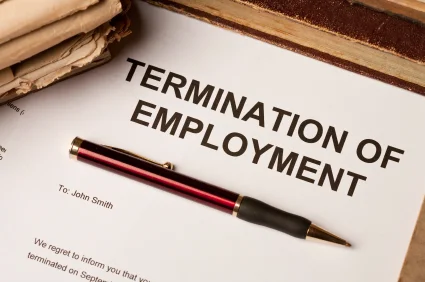
Asset Protection Tips for entrepreneurs, medical practice professionals and small business owners. This article discusses how to put a plan in place for protection from employee lawsuits. We also cover common employee lawsuits, protecting business and personal assets, avoiding lawsuits, and termination tips.
The Equal Employment Opportunity Commission (EEOC) receives over 100,000 employee claims filed in a fiscal year. The result is nearly half a billion dollars that employers paid out in EEOC claims. A full 10% of wrongful termination and discrimination cases see employees awarded $1 Million+ settlements. The average is $40,000 per settlement. Legal fees for court trials in these cases average $45,000 in defense costs.
No matter how well prepared you are, you can still become victim to a Robin Hood judge. Many members of the judiciary delight in transferring a business owner’s wealth to an employee looking for an easy buck. So, do what it takes to protect yourself. For example, you can establish an asset protection trust. It it one of the most effective tools to shield your hard-earned wealth from employee lawsuit cases. Then, divide your business empire into a series of properly filed and maintained companies. When someone sues one of the companies, the lawsuit does not affect the others. Do this before the bullets start to fly is a good start. That said, below we will discuss some additional warnings and corresponding precautions you can take.

Common Employee Lawsuits
The most common employment claims are wrongful termination, discrimination (age, sex, religion), sexual harassment, retaliation, whistleblowing and more. Race discrimination used to top the charts, however retaliation has become the top cited form of discrimination claim.
Unfortunately these figures are on the rise. We assist more and more business owners and medical practice owners who are concerned with employee lawsuit vulnerability. There are many reason why this is happening, both socially and economically, however it means that it’s never been more important to protect yourself and your business from an EEOC claim.
As soon as an employee files an unemployment claim, his or her mailbox is filled with mail from law firms offering free consultations boasting big payouts. It would cost a person nothing to try because a majority of these firms offer services on a contingent fee basis.

Business Protection
Insurance is not enough. Carrying EPLI (employment practices liability insurance) offers limited protection to the business depending on your state and insurance policy. Depending on how you structured your business, your business entity may not shield your business assets. The secret? Set up one corporation or LLC to operate your business. Set up another company (preferably an LLC) that owns business equipment. Your operating company simply leases the equipment from company number two. Both, in turn, protect you from personal exposure.

Personal Asset Protection
Finding yourself in an employee lawsuit could be big and costly, not just in legal fees, but in your time as well. You can take your wealth off of the lawsuit radar for good with a proper asset protection strategy. Set up an asset protection trust. Inside the asset protection trust is an LLC. You are the manager of the LLC. You make investments. As the manager you are the signatory on the bank and investment accounts. When the “bad thing” happens, the trustee steps in as LLC manager. This puts you in a position of impossibility when ordered to release the funds.
Your home goes into a land trust for privacy. Income property also goes into individual land trusts. Then, for anything but a personal residence, an LLC owns each land trust. The land trust provides a shield to keep your name and company names out of the public records. The LLC gives asset protection. For example, you and your spouse own the LLC. When someone sues you, legal provisions protect your company membership and anything inside of it.

Avoiding the Lawsuit
The best outcome you could wish for is that nobody hits you with a lawsuit. the problem is that you don’t control the other guy. Any employee can sue you at any time, whether justified or not. The only thing you can do is to protect your assets from lawsuits and be clear about employee and management policies .
Managing employees is challenging because we all want to be a nice person and for others in the workplace to like us. Unfortunately that’s where most of the problems arise. The most problematic management responsibility, in a legal sense, is hiring, firing and discipline in proper and effective ways.

Employee Firing and Discipline Tips
- Have written job descriptions with responsibilities and performance expectations
- Communicate clearly how you enforce your requirements
- Encourage and enable employees to communicate any issues in the workplace or their performance
- Establish a specific discipline process and high standards
Firing an employee is a process in which you, the business owner, are responsible. Here’s a four-step discipline plan for employees that can help you avoid an EEOC lawsuit.
Initially, deliver constructive criticism, further instructions and feedback (good or bad) verbally. This is as simple as communicating to your employee that there is a performance issue or conflict in the workplace that he or she needs to assess.
If an employee’s subpar behavior or performance persists, you write down exactly what the performance issue is. Then reference the job description that they interviewed for with your performance expectations, discipline process and responsibilities clearly defined. Provide a copy to the employee. This all becomes a pillar in your case against an EEOC charge.
Before firing your employee, the final management discipline action is to provide an affirmative written agreement. It should generally specify the performance or behavior that the employee needs to improve. The agreement will tie everything together, the employee agreement with employee responsibilities, performance expectations as well as your discipline plan. In the agreement the employee should agree to specific changes in his or her performance and behavior.

More Helpful Hints
- The most common mistake made by managers is not keeping records of underperformance or bad employee behavior
- Verbal warnings and discipline often ends up into a hearsay battle
- With detailed documentation of repeat offense with an employee signature would leave little chances of losing a lawsuit, or even finding a lawyer to sue
When it comes time to terminate an employee after all of your management efforts have failed, you must have this process defined. Start with security; you should first address access, keys, passwords, entry cards or other security items such as alarm codes. HR experts recommend that you have a witness during this process. It should include a final interview that you document, if possible. If the employee has compensation coming, write a check on the spot (if you can), including any severance or other offering you may have at the time of termination. Finally, encourage feedback, either at the time of the final interview, or in writing later with a form that you provide.
You cannot avoid the lawsuit threat. However you can minimize your vulnerability. Communicated and enforce strong practices and policies. Most importantly, protect your business and personal assets from lawsuits.

Workplace Tips
A growing field of employee issues is bullying in the workplace. Where sexual harassment lead the pack for years, today an employee can be intimidated and create an HR nightmare these days.
If you are aware of sexual harassment or workplace bullying, you must investigate the allegation quickly, fairly and have some procedures in the event that the allegation is true. This is done through having forms for written complaints, investigation and witness interview as well as a discipline action policy plan. When you investigate and document findings you significantly reduce the risk of a terminated employee having a legitimate case.
Age discrimination in today’s world plays a small role in department of labor complaints. There are baby-boomers applying for jobs and as an employer you’re not allowed to ask if they are close to retiring or other aged related questions. One client of ours, for example, was downsizing a medium sized business and chose to let go of all employees over the age of 50. It created a mega lawsuit that likely could have been avoided.



